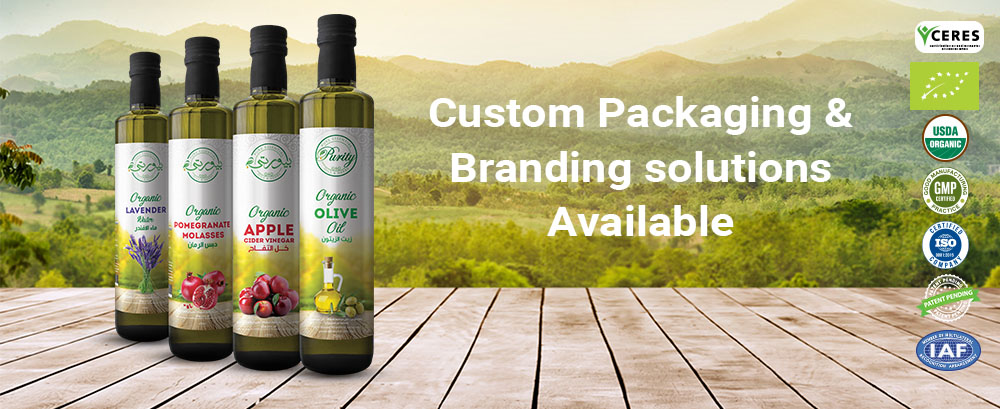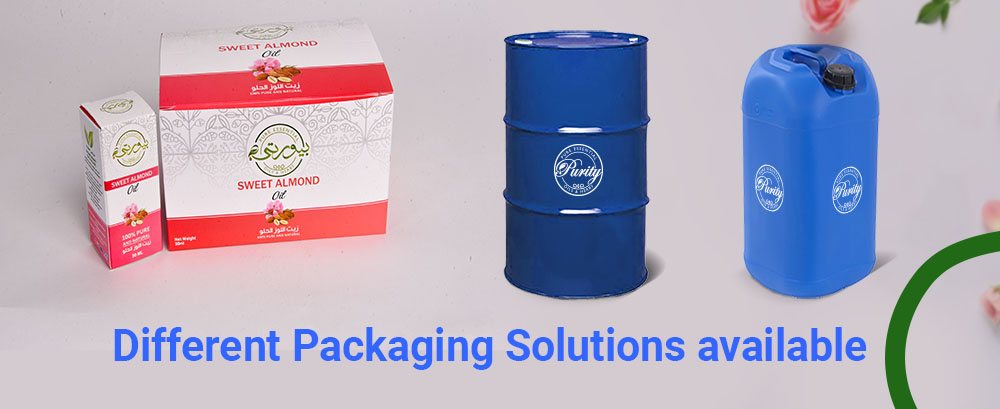Best Seller Items
-
Coconut Oil Organic & Conventional Consumer Pack
Coconut oil comes from the nut (fruit) of the coconut palm. The oil of the nut is used to make medicine. Some coconut oil products are referred to as “virgin” coconut oil. Unlike olive oil, there is no industry standard for the meaning of “virgin” coconut oil. The term has come to mean that the oil is generally unprocessed. For example, virgin coconut oil usually has not been bleached, deodorized, or refined.
Some coconut oil products claim to be “cold pressed” coconut oil. This generally means that a mechanical method of pressing out the oil is used, but without the use of any outside heat source. The high pressure needed to press out the oil generates some heat naturally, but the temperature is controlled so that temperatures do not exceed 120 degrees Fahrenheit.
People use coconut oil for eczema (atopic dermatitis). It is also used for scaly, itchy skin (psoriasis), obesity, and other conditions, but there is no good scientific evidence to support these uses.
How does it work ?
Coconut oil contains a certain kind of fat known as “medium chain triglycerides.” Some of these fats work differently than other types of saturated fat in the body. When applied to the skin, coconut oil has a moisturizing effect.Login to view pricesCoconut Oil Organic & Conventional Consumer Pack
Login to view prices -
Argan Oil Organic & Conventional Consumer Pack
Argan oil is made from the kernels that grow on the argan trees native to Morocco. It’s most frequently sold as pure oil, which can be directly applied topically (directly to the skin) or ingested in order to provide several health benefits. It comes in supplement capsule form to be taken by mouth. It’s also commonly mixed into a number of cosmetic products like shampoos, soaps, and conditioners.
Argan oil has traditionally been used both topically and orally to improve the health of skin, hair, and nails. It contains a number of different beneficial properties and vitamins that form a powerful combination to boost skin health.
Argan oil has been a culinary staple in Morocco for centuries — not only because of its subtle, nutty flavor but also its wide array of potential health benefits. This naturally occurring plant oil is derived from the kernels of the fruit of the argan tree.
Although native to Morocco, argan oil is now used across the globe for a variety of culinary, cosmetic and medicinal applications.Login to view pricesArgan Oil Organic & Conventional Consumer Pack
Login to view prices -
Olive Oil Organic & Conventional Consumer Pack
Olive oil is a liquid fat obtained from olives a traditional tree crop of the Mediterranean Basin. The oil is produced by pressing whole olives. It is commonly used in cooking, whether for frying or as a salad dressing. It is also used in cosmetics, pharmaceuticals, and soaps, and as a fuel for traditional oil lamps, and has additional uses in some religions.
The phytonutrient in olive oil, oleocanthal, mimics the effect of ibuprofen in reducing inflammation, which can decrease the risk of breast cancer and its recurrence. Squalene and lignans are among the other olive oil components being studied for their possible effects on cancer.Login to view pricesOlive Oil Organic & Conventional Consumer Pack
Login to view prices -
Tagette Marigold Tagetes minuta Essential Oil
Common name: Mexican Marigold
Latin name: Tagetes minuta L.
Family: Asteraceae (Compositae)
Other names: English: Aztec marigold, dwarf marigold, khaki-bush, Mexican marigold, Muster John Henry, stinking-Roger, stinkweed, wild marigold; Spanish: chinchilla enana; Hawai‘I: ‘ōkole‘oi‘oi; Bot. syn.: Tagetes glandulifera Schrank.
The common term “marigold” embraces a diversity of plants with golden flowers, most of which belong to the family Compositae. Prominent among the marigolds are various species of Tagetes.
Login to view pricesTagette Marigold Tagetes minuta Essential Oil
Login to view prices
-
Dehydrated Orange Citrus Sinensis in bulk packaging
Oranges (Citrus sinensis) are considered to be the fruits of winter and are found from December to April in groceries. An average orange, 5.5 cm diagonal, contains: 3.5 g of fiber (soluble and insoluble); 11% of recommended daily intake of vitamin B1 and folic acid; and 107% of recommended daily intake of vitamin C. Oranges resist long enough at room temperature, but if kept in the refrigerator, it can last up to 3 weeks. Oranges can be used in many ways and almost all parts of it, including the peel, can be used. But most often they are consumed without peel, fresh or in the form of juice.
Rich in vitamin C, fiber, calcium, and vitamin D, orange juice contains essential nutrients and fortifying substances for the bone system. Peel oranges is often put in drinks made from other fruits. Aschoff et al. compared the bioavailability of β-cryptoxanthin from either fresh navel oranges (C. sinensis L. Osbeck) or pasteurized orange juice. From their studies, orange juice represents a more bioavailable source of β-cryptoxanthin than fresh oranges (Aschoff et al., 2015b). In others studies on content from freshly squeezed, flash-pasteurized, and pasteurized juices (Aschoff et al., 2015a) assumed that the higher hesperidin level in orange fruits compared to orange juice offers only a limited nutritional benefit.
Login to view pricesDehydrated Orange Citrus Sinensis in bulk packaging
Login to view prices -
Dehydrated Lemon Citrus Limon in bulk packaging
Lemons are the wonders of the fruit world. Packed with good nutrition, anti-bacterial, a natural bleach, tasty, and lovely to look at into the bargain! They can be used in cooking, added to cleaning products or beauty products, and are excellent for healing and fighting infection. What a little yellow bomb of goodness they are, so dehydrating them simply has to be done!
It can be used for so many things the list is almost endless. For example dried lemon slices can be added to tea, or to iced water for a cool summer drink, for flavoring, As an antiseptic , Aids digestion, fights inflammation, has antiseptic and coagulant properties, good for the hair
Login to view pricesDehydrated Lemon Citrus Limon in bulk packaging
Login to view prices -
Molokhia Egyptian Spinach Corchorus olitorius dried Leaves and Powder in bulk packaging
Molokhia or Mulukhiya, commonly known as Egyptian Spinach, Mallow, Nalta Jute, or Tossa Jute is an annual herb native to ancient Egypt. It’s leaves are used and prepared as a vegetable and it is a staple ingredient in Middle Eastern, East African, and North African cuisine.
Sometimes referred to as Middle East’s super-green, Molokhia is packed full of vitamins and minerals. It’s rich in fiber, potassium, iron, calcium, magnesium, phosphorous, and selenium, as well as vitamins C, E, K, A, B6, and niacin.
Molokhia has dark green leaves, green and red stems, vibrant yellow flowers, and seedpods that somewhat resemble okra. Plant Molokhia in the Spring and enjoy harvesting it all Summer long. The average height is 2 ft but Molokhia can grow as high as 10 ft in just one growing season. That’s a lot of fresh Molokhia!
Login to view prices -
Dehydrated Onion Allium cepa in bulk packaging
Common name: Onion
Latin name: Allium cepa L.
Family: Liliaceae
Other names: Engl.: garden onion, common onion, onion, shallot. Arabic: Basal. Deu.: Zwiebel. Suom.: ruokasipuli, hillosipuli, kepasipuli, punasipuli, ryvässipuli, tavallinen sipuli, vihersipuli. Sven.: matlök, gullök, potatislök, rödlök, syltlök. Fran.: oignon
Login to view pricesDehydrated Onion Allium cepa in bulk packaging
Login to view prices -
Dehydrated Garlic Allium Sativum in bulk packaging
Common name: Garlic
Latin name: Allium sativum L.
Family: Liliaceae
Other names: Engl.: garlic, English garlic, poor man’s treacle. Deu.: Knoblauch, Alterswurzel, Knobloch, Knofel, Stinkerzwiebel. Suom.: valkosipuli. Sven.: vitlök. Fran.: ail, ail blanc, ail cultivé. Span.: ajo.
Login to view pricesDehydrated Garlic Allium Sativum in bulk packaging
Login to view prices -
Moringa oleifera Dried Leaves and Powder in bulk packaging shipped in 20″ FCL container
Moringa oleifera, native to India, grows in the tropical and subtropical regions of the world. It is commonly known as ‘drumstick tree’ or ‘horseradish tree’. Moringa can withstand both severe drought and mild frost conditions and hence widely cultivated across the world. With its high nutritive values, every part of the tree is suitable for either nutritional or commercial purposes. The leaves are rich in minerals, vitamins and other essential phytochemicals. Extracts from the leaves are used to treat malnutrition, augment breast milk in lactating mothers. It is used as potential antioxidant, anticancer, anti-inflammatory, antidiabetic and antimicrobial agent. M. oleifera seed, a natural coagulant is extensively used in water treatment. The scientific effort of this research provides insights on the use of moringa as a cure for diabetes and cancer and fortification of moringa in commercial products. This review explores the use of moringa across disciplines for its medicinal value and deals with cultivation, nutrition, commercial and prominent pharmacological aproperties of this “Miracle Tree”.
Login to view prices -
Licorice roots Powder in bulk packaging shipped in 20″ FCL container
Licorice root, which is considered one of the world’s oldest herbal remedies, comes from the root of the licorice plant (Glycyrrhiza glabra) . Native to Western Asia and Southern Europe, licorice has long been used to treat various ailments and flavor candies, drinks, and medicines.
Login to view pricesLicorice roots Powder in bulk packaging shipped in 20″ FCL container
Login to view prices -
Lemongrass Cymbopogon dried herb in bulk packaging shipped in 20″ FCL container
Lemongrass is a plant. The leaves and the oil are used to make medicine. Lemongrass is commonly taken orally, applied directly to the skin, or inhaled as aromatherapy for many different conditions. But there is limited scientific research to support any of its common uses.
In food and beverages, lemongrass is used as a flavoring. For example, lemongrass leaves are commonly used as “lemon” flavoring in herbal teas. In manufacturing, lemongrass is used as a fragrance in deodorants, soaps, and cosmetics. Lemongrass is also used in making vitamin A and natural citral.
Login to view pricesLemongrass Cymbopogon dried herb in bulk packaging shipped in 20″ FCL container
Login to view prices -
Peppermint Mentha Piperita dried Leaves in bulk packaging shipped in 20″ FCL container
Common name: Peppermint
Latin name: Mentha x piperita L.,
Family: Lamiaceae
Other names: Engl.: peppermint, black peppermint, chocolate mint. Deu.: Pfefferminze. Suom.: piparminttu. Sven.: pepparmynta. Fran.: menthe poivrée. Bot. syn.: Mentha aquatica L. x spicata L., Mentha dumetorum Schultes.
Peppermint is a sterile hybrid derived from a cross between Mentha aquatica and M. spicata.
Login to view prices -
Celery dried leaves Apium graveolens Seeds in Bulk packaging Shipped in 20″ FCL Container
Common name: Celery
Latin name: Apium graveolens L
Family: Apiaceae (Umbelliferae)
Other names: Arabic: Karfas, Karafs; Czech: Celer; German: Sellerie, Eppich; English: Celeriac; French: Céleri ; Spanish: Apio; Swedish: Selleri
Description:
Apium graveolens L, the common celery, is a hapaxanthic herb, grown as a biennial and, unde certain conditions, as an annual.
From the beet-like tap-root (the uppermost part being a shoot) with its fibrous sideroots rises an aerial stem, 2 to 3 ft. high, branched and leafy, which bears compound umbels of small white flowers. The small fruit (or seed, as it is called commercially) consists of an ovate, dark brown cremocarp.
Possessing a characteristic, agreeable odor and a warm, aromatic, somewhat pungent taste, it is employed as condiment in the flavoring of food products. The seed also serves as birds’ food. The volatile or essential oil distilled from celery seed is used extensively for flavoring purposes.
Login to view prices -
Celery Seed Apium graveolens Seeds in Bulk packaging Shipped in 20″ FCL Container
Common name: Celery
Latin name: Apium graveolens L
Family: Apiaceae (Umbelliferae)
Other names: Arabic: Karfas, Karafs; Czech: Celer; German: Sellerie, Eppich; English: Celeriac; French: Céleri ; Spanish: Apio; Swedish: Selleri
Description:
Apium graveolens L, the common celery, is a hapaxanthic herb, grown as a biennial and, unde certain conditions, as an annual.
From the beet-like tap-root (the uppermost part being a shoot) with its fibrous sideroots rises an aerial stem, 2 to 3 ft. high, branched and leafy, which bears compound umbels of small white flowers. The small fruit (or seed, as it is called commercially) consists of an ovate, dark brown cremocarp.
Possessing a characteristic, agreeable odor and a warm, aromatic, somewhat pungent taste, it is employed as condiment in the flavoring of food products. The seed also serves as birds’ food. The volatile or essential oil distilled from celery seed is used extensively for flavoring purposes.
Login to view pricesCelery Seed Apium graveolens Seeds in Bulk packaging Shipped in 20″ FCL Container
Login to view prices -
Rosemary Rosmarinus officinalis dried Leaves in bulk packaging shipped in 20″ FCL container
Common name: Rosemary.
Latin name: Rosmarinus officinalis L.
Family: Apiaceae (Umbelliferae)
Other names: Engl.: rosemary, dew of the sea. Deu.: Rosmarin. Suom.: rosmariini. Sven.: rosmarin. Fran.: romarin. Pharm.: folia anthos, folia roris marini
The botany of rosemary is rather complicated, as there exist, according to Turill, several species of the genus Rosmarinus with a number of varieties and forms:
Rosmarinus officinalis L. var. genuina Turrill. Occuring in most Mediterranean countries, the Canary Islands, the Azores, and Madeira.
Login to view prices





